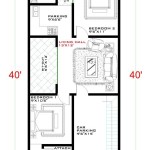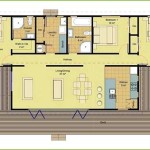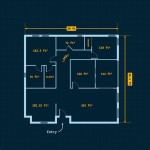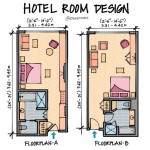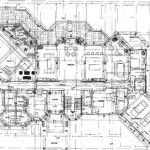How to Find the Floor Plan of Your Home
Obtaining a floor plan of a residence can be crucial for various purposes. Whether planning renovations, assessing property value, or facilitating interior design projects, having an accurate floor plan offers a significant advantage. Locating these documents, however, is not always straightforward. This article will explore several methods for uncovering the floor plan of a home, addressing potential challenges and providing practical strategies for success.
Exploring Official Government Records
One of the most reliable avenues for finding a home's floor plan is through official government records. These records, maintained by local municipalities and county offices, often contain detailed information about properties, including architectural drawings and site plans. The specific department responsible for these records can vary depending on the location, but typically, it falls under the purview of the building department, planning department, or land registry office.
To begin the search, it is essential to identify the relevant government entity responsible for maintaining property records in the specific jurisdiction where the home is located. This information can typically be found on the county or city government website. Once identified, the next step involves contacting the appropriate department to inquire about the availability of floor plans and the procedures for accessing them.
Accessing these records may require a formal request, often involving the completion of a specific application form and payment of a nominal fee. The application typically requires providing the property address, the owner's name, and a brief explanation of the reason for the request. Some jurisdictions may also require proof of identification and ownership of the property.
After submitting the request, the government entity will typically conduct a search of their archives to determine if a floor plan is available. If a floor plan is located, it may be provided in physical form, such as a blueprint or a scanned copy, or it may be accessible digitally through an online portal.
It is important to note that not all homes will have a floor plan on file with the local government. Older homes, in particular, may predate the requirement for submitting detailed architectural plans. In such cases, alternative methods, as outlined in subsequent sections, may need to be explored.
Furthermore, even if a floor plan is located, it may not be perfectly accurate or up-to-date. Over time, homes may undergo renovations or additions that are not reflected in the original plans. Therefore, it is prudent to verify the accuracy of the floor plan by comparing it to the actual layout of the home.
Contacting Previous Owners, Builders, or Architects
Another potential source for obtaining a home's floor plan is through direct contact with individuals or entities involved in the home's construction or ownership history. This includes previous owners, builders, architects, and even real estate agents who may have access to historical property records.
Previous homeowners, especially those who commissioned the construction of the home or undertook significant renovations, may possess a copy of the floor plan. Reaching out to them, if possible, can be a relatively straightforward way to obtain the desired document. Contact information for previous owners may be available through property records or online search engines.
If the home is relatively new, the builder or architect who designed and constructed the home is likely to have a copy of the floor plan. Contacting the building company or architectural firm can be a fruitful approach. They may be willing to provide a copy of the floor plan, especially if the home is still under warranty or if they have a policy of retaining architectural drawings for a certain period.
Real estate agents involved in the sale of the home may also have access to floor plans, although this is not always the case. Real estate agents often receive floor plans as part of the listing package, and they may retain a copy for their records. Contacting the real estate agent who last sold the home can be a worthwhile endeavor.
When contacting these individuals or entities, it is important to be polite and professional, and to clearly explain the reason for the request. Providing the property address and any relevant details about the home's construction or ownership history can help them locate the floor plan more easily. It is also prudent to offer to cover any costs associated with retrieving or copying the document.
However, it is important to acknowledge that contacting these sources may not always be successful. Previous owners may have misplaced or discarded the floor plan, or the builder or architect may not be willing to release the document due to privacy concerns or proprietary rights. In such cases, alternative methods should be pursued.
Creating a Floor Plan From Scratch
If all other attempts to locate an existing floor plan prove unsuccessful, the remaining option is to create a floor plan from scratch. This involves measuring the dimensions of the home and creating a scaled drawing that accurately represents the layout of the rooms and features.
Creating a floor plan from scratch can be a time-consuming and meticulous process, but it is a viable option for obtaining a usable representation of the home's layout. The accuracy of the resulting floor plan depends on the precision of the measurements and the skill of the individual creating the drawing.
The first step in creating a floor plan from scratch is to gather the necessary tools and materials. This includes a measuring tape (preferably a laser measuring tool for increased accuracy), a pencil, a ruler, graph paper, and a calculator. A notebook or digital device for recording measurements is also essential.
Next, begin by measuring the exterior dimensions of the home. This will provide the overall footprint of the building. Then, proceed to measure the interior dimensions of each room, including the length, width, and height. Be sure to measure all walls, doorways, windows, and other significant features.
As measurements are taken, carefully record them in the notebook or digital device. Accurate and detailed notes are crucial for creating an accurate floor plan. It is also helpful to sketch a rough outline of each room as you measure it, noting the location of doors, windows, and other features.
Once all the measurements have been recorded, the next step is to create a scaled drawing of the floor plan on the graph paper. Choose a suitable scale that allows the entire floor plan to fit comfortably on the paper. Use the ruler and pencil to draw the walls and features to scale, referring to the measurements and notes taken earlier.
Pay close attention to detail when drawing the floor plan. Accurately represent the thickness of the walls, the width of the doorways, and the dimensions of the windows. Label each room with its name and dimensions. Add any other relevant features, such as stairs, fireplaces, and built-in cabinets.
Creating a floor plan from scratch can be challenging, especially for individuals without prior experience in architectural drawing. There are also software options available, which can simplify the process and offer more accurate results. These programs often include features such as automated measurement tools, pre-designed templates, and 3D visualization capabilities.
If creating a floor plan from scratch seems daunting, consider hiring a professional to do the job. Architects, interior designers, and building contractors can provide accurate and detailed floor plans based on their expertise and experience. While this option involves a cost, it can ensure the creation of a high-quality floor plan that meets specific needs.
When the floor plan is complete, carefully review it to ensure its accuracy and completeness. Compare the floor plan to the actual layout of the home, and make any necessary corrections or adjustments. A well-executed floor plan can be a valuable asset for planning renovations, assessing property value, or facilitating interior design projects.
Before undertaking any home improvement project based on a self-created or found floor plan it is advisable to consult with a qualified professional, especially when structural changes are being considered. This will help ensure the project is safe, complies with local building codes, and achieves the desired outcome.

Floor Plan Creator And Designer Free Easy App

Free Floor Plan Creator Design 2d 3d Layouts Easily
51.jpeg?strip=all)
My House Design Home

House Plans And Design

Our New Home The Floorplan How To Nest For Less

How To Create A Home Floor Plan My Pocket Studio

My Dream Home Free Design 3d Floor Plans By Planner 5d

Roomsketcher Floor Plan Home Design App

Can A Custom Builder Make My Floor Plan Bigger 5 Ways To Add Square Footage Travars Built Homes

How Do I Spatially Plan My Room Bright Side Interiors
Related Posts

